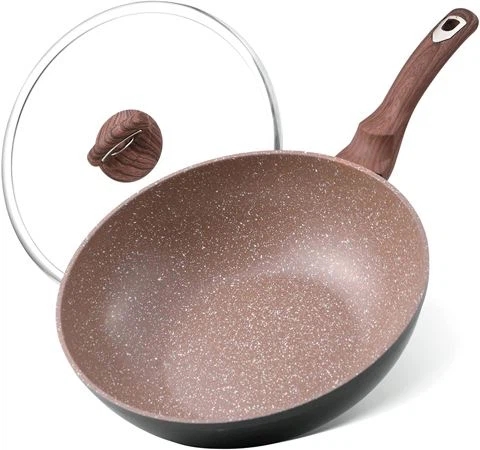1. Cast iron
Due to poor ductility, the cast iron pots and kitchen knives we see are very 'heavy'. In addition, the thermal conductivity of cast iron is insufficient, but its heat storage performance is good. This is even harder to understand. But cast iron pots are not useless. Cast iron pots have a wide range of uses and can be used for stewing and stewing. When making food, ingredients can be heated evenly and are sturdy and durable. However, cast iron pots are also prone to rusting and should be maintained in a timely manner for daily use. The 'cooking pot' should be done immediately after purchase to achieve a 'non stick' effect, and wiped off promptly after each cleaning.
2. Non stick pan
Why is a non stick pan non stick? In fact, the surface of the iron pot is covered with a layer of anti sticking coating. These coatings have good lubricity, low friction coefficient, and surface tension. This characteristic makes it difficult to adhere to the surface. Therefore, the ingredients are not easy to stick to the pot.
There are two common types of non stick coatings: silicone polymers and fluoropolymers. Comparing the two, fluoropolymer coating is better, but silicone polymer has better scratch resistance than fluoropolymer.

When using a non stick pan, the following points should also be noted:
Firstly, we must avoid scratching the coating with sharp objects. We can choose wooden spatulas or synthetic spatulas for cooking. Do not use steel wool to wash the pot. Try using a sponge, cloth, or soft brush for cleaning. Meanwhile, acidic foods can interact with substances in the pot that are not covered by coatings (such as iron), causing the coating to peel off. Therefore, avoid using non stick pans to make acidic ingredients. Sometimes our non stick pot starts to become sticky during use, which means the coating has peeled off and we need to replace it with a new pot.
Some people may still doubt: is it true that the coating on non stick cookware is toxic? Let's take a look at the two materials mentioned above:
① Silicone polymer coating: Its inner wall is usually white, made of inorganic materials, does not cause harm to the human body, and can withstand higher temperatures than fluorinated polymer coatings. However, the anti sticking effect is not as good as that of fluorinated polymer coatings, and their service life is generally 6-9 months, with low cost-effectiveness.
② Fluoropolymer coating: The inner wall is usually matte black or matte black, and is very stable at temperatures below 260 ° C. However, once the temperature exceeds 260 ° C, harmful substances may be released. Therefore, when using this coating for non stick pans, it is necessary to avoid empty burning, prevent excessive temperature, and not wait until the oil has smoked before adding ingredients.
3. Aluminum pots, other pots
Aluminum has thermal conductivity second only to copper, but it is prone to dissolve substances during high-temperature frying, leading to excessive intake of aluminum by the human body. Aluminum has adverse effects on the human nervous system, so aluminum pots are rare in the market.
There are currently multi-layer pots on the market. The interior is made of aluminum and the exterior is made of stainless steel, which can prevent surface corrosion and prevent aluminum dissolution. However, this type of pot is very heavy. We can choose the appropriate pot according to our needs